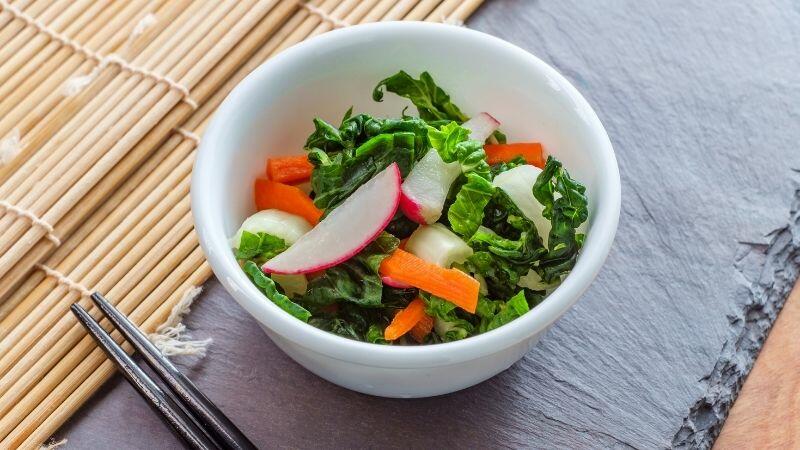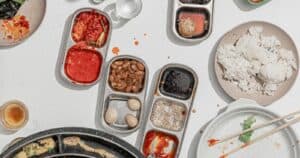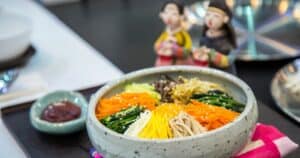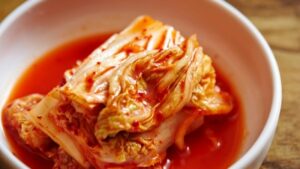Do you love the tangy, funky flavors of kimchi but find the
Luckily, it’s easy to control the heat level when making or buying kimchi. With a few simple tweaks, you can keep all the nutritional benefits and bold tastes while dialing down the scorch.
The key is to reduce the amount of spicy ingredients added, choose milder pepper varieties, limit fermentation time, and balance out the heat. Let’s explore easy ways to make kimchi as mild or spicy as you wish.
Quick Fixes for Toning Down Homemade Kimchi
Let’s start with some easy ways to control the
Use Less Chili Flakes
This one is obvious but important. The main source of heat in kimchi comes from Korean red pepper flakes, also called gochugaru. Cut the amount of chili flakes in half, or omit them completely for a non-spicy kimchi.
Choose Milder Pepper Varieties
Not all chili peppers are created equal. Gochugaru packs some serious punch. For a mellower version, opt for milder dried chilies like ancho, chipotle, or New Mexico. You can also use fresh mild peppers like poblanos or Anaheims.
Add More Veggies
Packing your kimchi jar with extra vegetables like carrots, radish, or cucumber will dilute the chili flakes’ intensity. The veggies’ natural juices also help tame the
Reduce Fermentation Time
The longer kimchi sits, the tangier and more complex the flavors get. But extra fermentation time also intensifies the chili burn. For milder kimchi, cut the fermentation short after just 2-3 days.
Rinse Off the Top Layer
Over fermentation time, the chili flakes rise and concentrate on top. Before serving, you can scrape off and discard this top layer of especially spicy kimchi.
Smart Shopping for Milder Store-Bought Kimchi
When buying pre-made kimchi, keep these tips in mind:
Seek Out Mild Varieties
Many store-bought kimchi brands now offer “mild” versions with lowered
Try White Kimchi

Baek kimchi ditches the chili flakes altogether for a refreshing, non-spicy take on kimchi made without the red pepper. The crisp, slightly sour taste makes a perfect palate cleanser.
Pick Vegetable-Based Kimchi
Spiciness perception can vary based on the main ingredient. Radish or cucumber kimchi tend to be milder than traditional cabbage kimchi. Bok choy, green onion, and chive kimchi also pack less heat.
Look For Shorter Fermentation Times
As with homemade kimchi, products fermented for less time will be milder in
Smart Ways to Temper Spice When Eating Kimchi
Finally, these simple tricks can help cool the burn when eating kimchi:
Balance It Out
Eat kimchi alongside something mild like plain white rice, blanched vegetables, or a scrambled egg. The neutral flavors help balance the chili heat.
Cut It With Dairy
Dairy proteins bind to capsaicin, helping wash it away. Drink milk or eat yogurt or cheese alongside spicy kimchi.
Add Acid
Spice perception decreases with acidity. Squirt some lemon juice over kimchi or sip on an acidic tomato or cranberry juice.
Complement With Sweet
A touch of sugar helps offset spicy heat. Add a bit of honey or maple syrup to your kimchi dish.
Garnish With Herbs
Fresh mint, cilantro, or basil have cooling effects on the palate. Sprinkle over your finished kimchi stew or wraps.
Handling the Afterburn: How to Soothe Your Mouth After Spicy Foods
So you went a little overboard with the gochujang and now your mouth is on fire. Don’t worry – there are some simple, tasty ways to get relief:
Drink Milk
The casein protein in milk binds to capsaicin, washing it away from receptors in your mouth. Whole milk works best.
Suck on Ice Cubes
The cold temperature helps numb your tastebuds. Plus, the water dilutes the chili pepper oils.
Eat Sugar or Honey
Viscose sugars and honey coat your mouth, temporarily shielding it from irritating capsaicin.
Try Yogurt or Ice Cream
The cooling sensation comes from dairy proteins and fats, plus a cold temperature.
Gargle with Lemon Juice
Acidic citrus helps break down capsaicin. But avoid high-acid juices if you have mouth sores.
Soothe with Basil or Mint
Herbs like basil, mint, or parsley have natural anti-inflammatory compounds that ease the burn.
FAQs: Your Kimchi Spice Questions Answered
Got more questions about controlling kimchi
Is it possible to make kimchi without any spicy ingredients?
Absolutely! Leave out the chili flakes and pepper paste entirely. Flavor it instead with things like ginger, garlic, green onions, fish sauce, herbs, and sesame oil.
Does rinsing kimchi reduce its spiciness?
Yes, rinsing helps wash away some of the chili oils that produce heat. Just avoid over-rinsing, which can dilute the flavor.
Can I tweak store-bought kimchi to make it less spicy?
You can try rinsing it or adding extra vegetables. But for best results, choose a product labeled as “mild” instead of altering what you buy.
Is non-spicy kimchi still healthy?
Definitely! The fermentation process still creates probiotics, vitamins, and minerals. You just miss out on the specific benefits of chili peppers like improved circulation.
What’s the best way to gradually adjust to spicy kimchi?
Start with a very small amount of mild kimchi with lots of rice. Slowly increase the portion size and
Spice Up Your Life – At Your Own Pace
Spicy or mild, kimchi offers great nutrition along with addictive flavor. Hopefully these tips equip you to enjoy this iconic Korean staple at just the right heat level for your tastes.
As your palate adapts over time, feel free to get more daring with the Sriracha or chili flakes. But there’s no shame in keeping it mild either. however you like it, kimchi can be an easy, tasty way to




